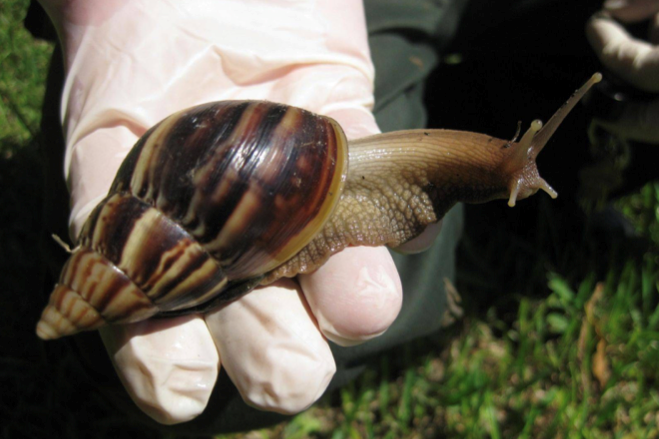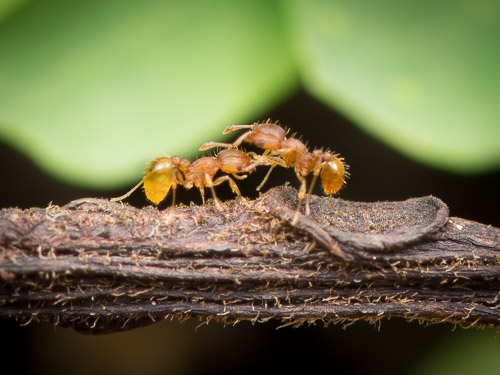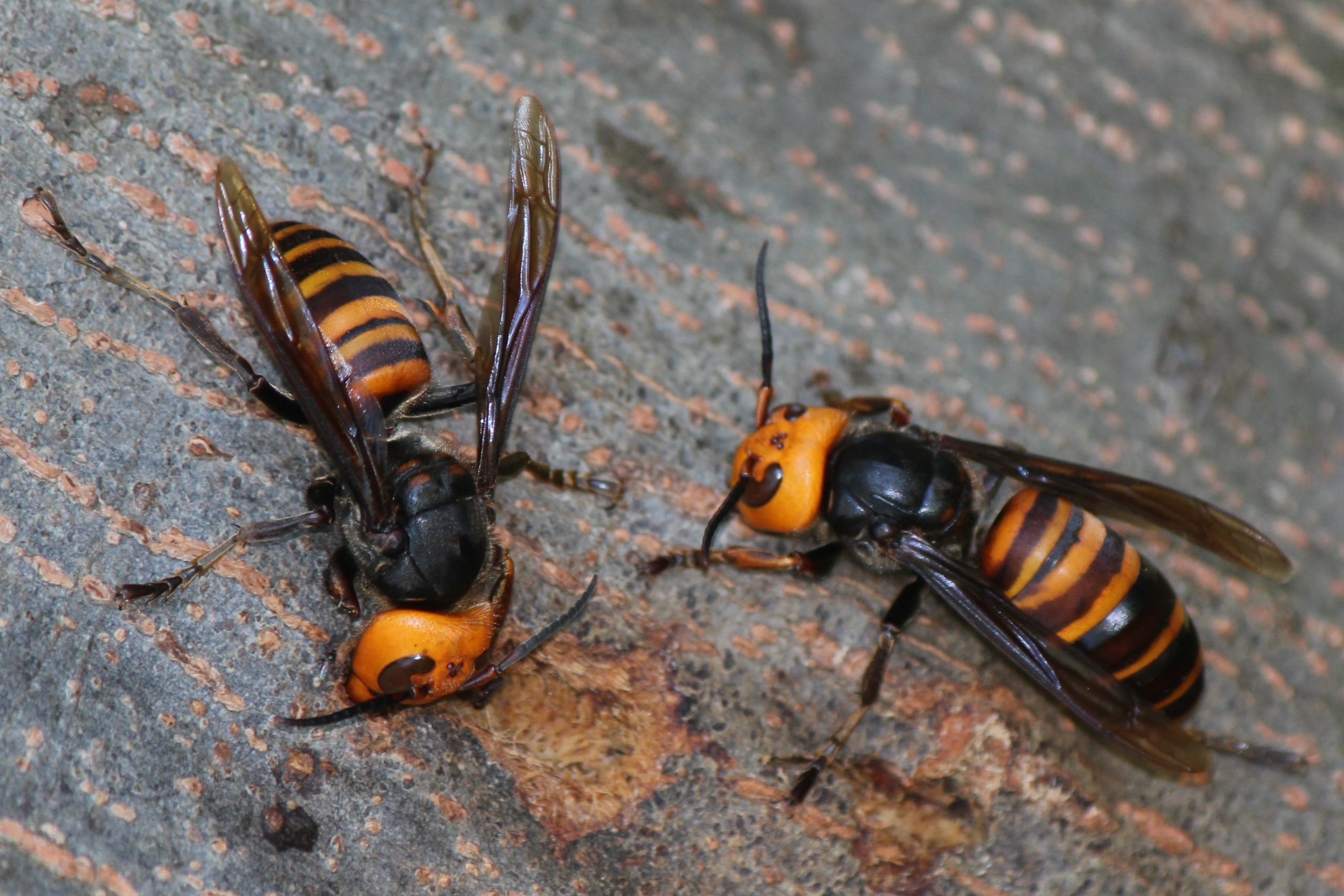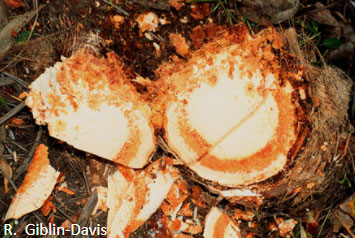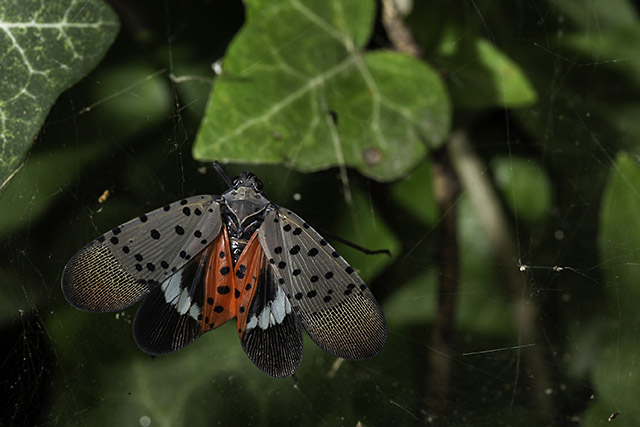Common name: Leatherleaf slugs
Scientific name: Sarasinula spp.
Status in Hawaii: Present throughout Hawaii; control but do not report.
Leatherleaf slugs are pests of ornamental plants, crops, and a human health threat since they carry the parasite that causes rat lungworm. Control efforts reduce damage and lessen the likelihood of spread to uninfested areas.
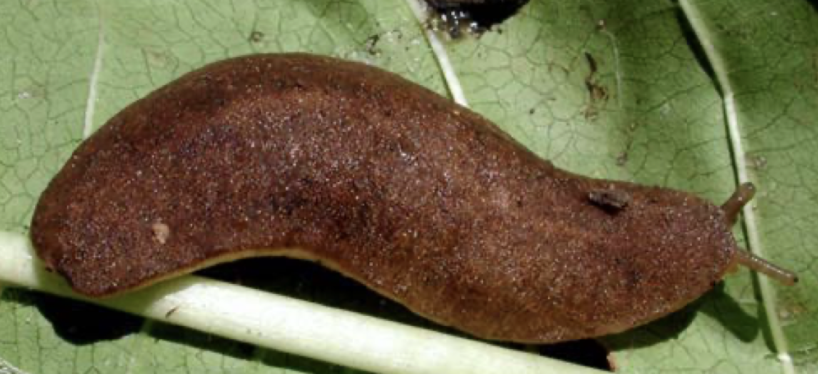
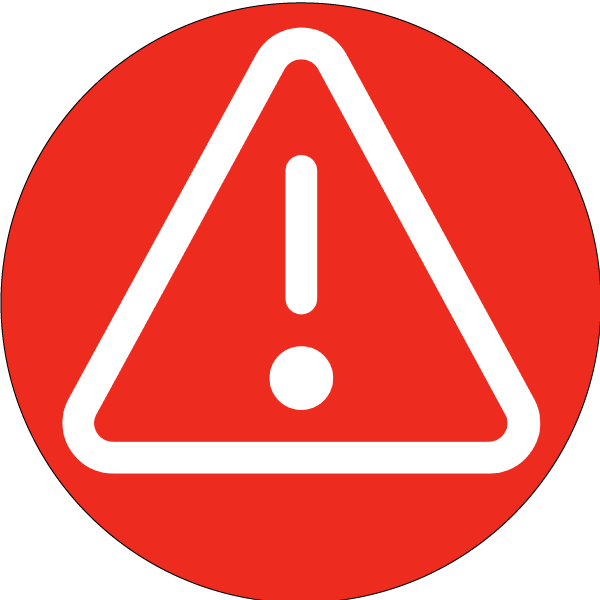
Impacts
- A nocturnal slug that prefers disturbed habitats, including backyards, gardens, and cultivated areas. This slug is oviparous, with clutches averaging 37 eggs. The slugs lay one to two clutches per year but can have as many as four.
- Species of this family have been found to carry several nematode parasites that threaten human health, including Angiostrongylus cantonensis (rat lungworm), A. costaricensis, and A. malaysiensis.

Identification
- A relatively large shell-less slug that can reach almost 3 inches (7.62 cm) in length. The upper surface (notum) is leathery and can sometimes appear pitted.
- The notum color is generally light to dark mottled brown with no pale stripe. Like all members of its family, a mantle cavity is absent.
- Sarasinula plebeia has a gray notum with randomly placed minute dark marks weighing an average of 3 grams.
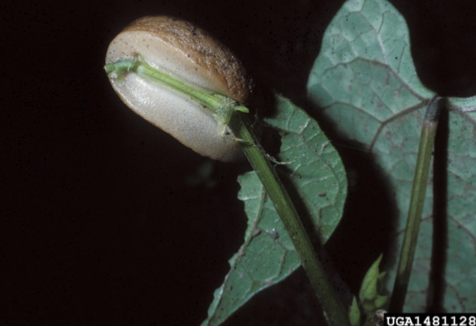

Vectors/Commodities
- New introductions of terrestrial mollusks will likely be related to commerce and human-assisted movement. Known microhabitats:
- Discarded wooden boards and planks, fallen trees, logs, and branches
- Damp leaf litter (not wet or soggy), compost piles, and rubbish heaps; and under flower pots, planters, rubber mats, tires, and other items in contact with the soil

Distribution
- This species was introduced into Hawai‘i in the 1970s. Anecdotal observations suggest that the decline of another pest slug, Laevicaulis alte, in Hawaii has coincided with the introduction of Sarasinula plebeia.
- The population of this species continues to increase in Hawaii and can cause severe damage to flowers and foliage. This species is a concern to Hawaii’s potted-foliage growers as this species can infest the commodity.
Best Management Practices
- Local control efforts prevent the spread from Hawai‘i and help protect the nursery industry and community from further impacts.
- BOLO: Be on the lookout! Routine nursery surveys are a proactive way to detect the presence of new pests.
- Search in heavily vegetated areas near where feeding damage has been observed, under debris, rocks, pots, and other areas where slugs/snails seek refuge.
- Trapping cannot be used alone but can be used to supplement visual surveying. Traps are not species-specific and will attract non-target species, including non-mollusks. Trap placement can occur in the same areas where visual surveys occur.
- Manage slug and snail populations by limiting the number of places slugs and snail can hide in. Remove unnecessary groundcover, cut back vegetation, and remove unnecessary items stored in contact with the ground.

References
- First records of the bean-slug Sarasinula plebeia (Gastropoda: Veronicellidae) in Argentina
- Animal and Plant Health Inspection Service
- Animal and Plant Health Inspection Service
- UH College of Tropical Horticulture and Human Resources: Best On-Farm Food Safety Practices: Reducing Risks Associated with Rat Lungworm Infection and Human Eosinophilic Meningitis
Other Nursery Pests
PEST PREVENTION TRAINING
An advanced education program for those on the front lines protecting Hawaii from invasive species.
Contact your local Invasive Species Committee to schedule a training for your team. Learn more
This material was made possible, in part, by a Cooperative Agreement from the United States Department of Agriculture’s Animal and Plant Health Inspection Service (APHIS). It may not necessarily express APHIS’ views.














